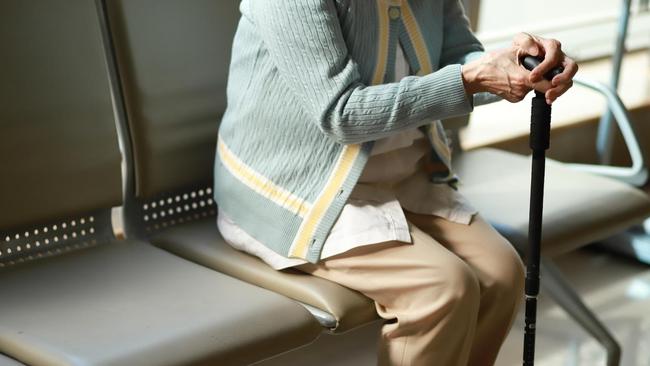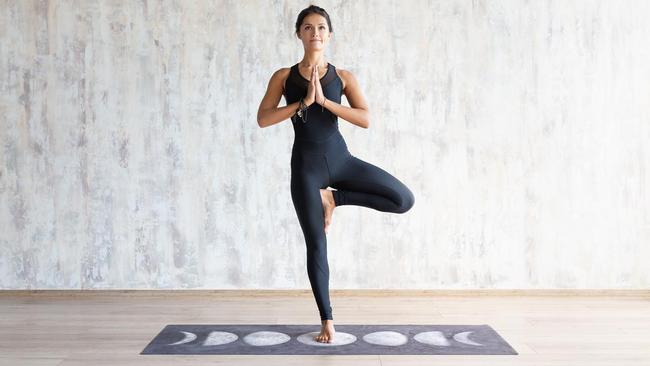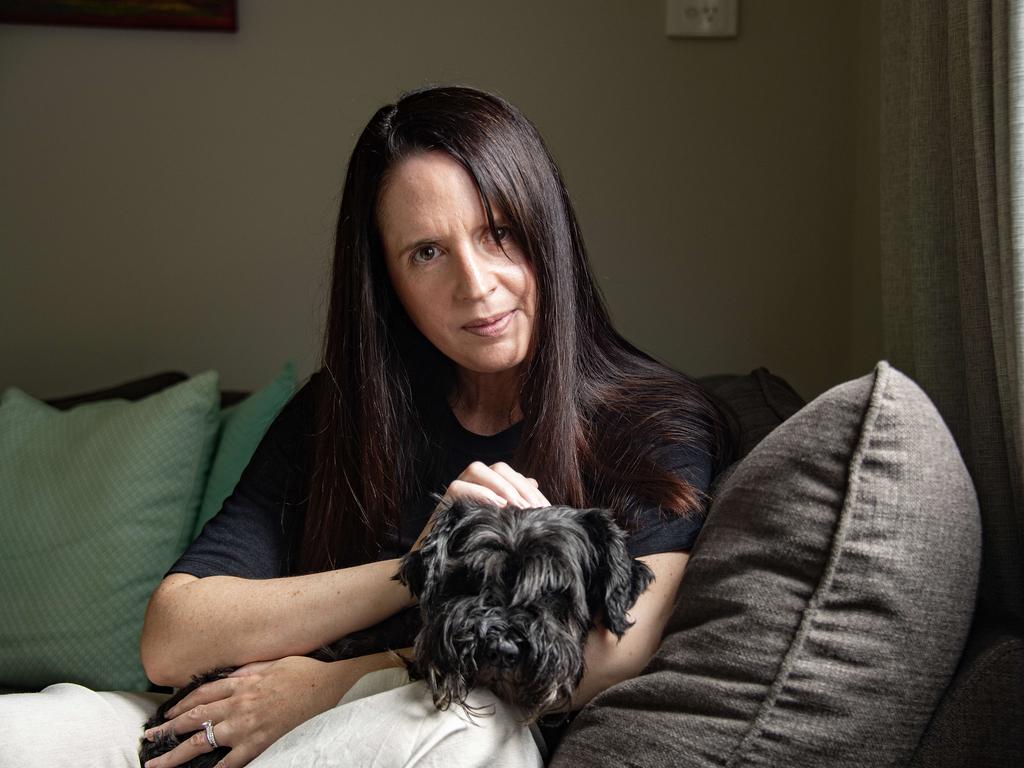Astronaut Zibrio scales weigh risk of elderly falling
A gadget made by NASA boffins has been integrated into bathroom scales, a gamechanger for boosting balance and reducing falls among older adults.

How well balanced are you? I am standing on a set of smart scales that will measure how much I wobble on my own two feet – how well (or poorly) I am maintaining equilibrium for 60 seconds.
Even when I feel I am standing steadily the Zibrio scales detect the slightest wayward motion, which is reflected in a score out of 10 displayed on the screen.
Developed by former NASA scientists, including the British neuroscientist Dr Katharine Forth, they are set to become the latest high-tech health-tracking trend to deliver data that might help to prevent the deleterious effects of ageing.

Already keeping tabs on your cholesterol, blood sugar and blood glucose levels? You can now add balance to the list of tests to take regularly.
It was while working at NASA that Forth came up with the idea of tracking balance for general good health.
“We were testing astronauts to find out how their posture stability – the control mechanisms for balancing themselves – was affected by microgravity, the weightlessness of space,” she says.
“Astronauts fell over on the Moon and had to adapt their balance when they got back home, so we developed cutting-edge equipment with powerful algorithms that could be fitted inside their moon boots to track these changes.”
Over lunch with colleagues in the NASA staff canteen they struck on the idea of integrating similar technology into bathroom scales for home use to boost balance and prevent falls. “They work by measuring the minute changes in forces under your feet as you sway even slightly,” Forth says.
“We use artificial intelligence to understand when balance is in good control and when there is some micro-failure that could prove dangerous.”
Previously there was no accurate way for the average person to measure balance or know when they need to improve it, and the best balance assessment we had was to time a rudimentary one-legged stand.
Already on sale in America for $US499 (about $710), where they are being installed into doctor’s surgeries and private clinics as well as in homes, the scales could prove a game-changer when rolled out here over the next 12 months.
Beyond giving a balance score, they connect via Bluetooth to the Zibrio Balance Coach app – now available to UK users for just under £4 a month (about $7) – which tracks changes over time and provides balance training advice and exercise programs to follow.
A study in Texas showed a 74 per cent reduction in falls among older adults who had regular access to the Zibrio scales, an improvement likely due to changes in lifestyle habits by participants.
In the UK, government statistics show that about a third of people aged 65 and over, and about half of people aged 80 and over, fall at least once a year.
The cost of falls to the NHS is more than £2.3 billion a year, according to the National Institute for Health and Care Excellence, and the impact of poor balance on longevity is huge. A 12-year study examining the relationship between balance and mortality in a group of 1702 people aged between 51 and 75 that was published last year in the British Journal of Sports Medicine concluded that an inability to stand unsupported on one leg for 10 seconds was associated with an 84 per cent raised risk of death from any cause.

Forth is all too aware of the devastation behind such statistics after her own grandmother fell down “some treacherous stairs in her home” and broke her hip.
“We witnessed this cascade of events that then led to her demise,” she says. “She had been the kind of grandma you’d kick a football with, who would walk an hour a day, and the worst thing is that the fall that led to her decline in health was entirely preventable.”
Not that the risk of falling is exclusive to the elderly.
“We have this image in our heads of what people at risk of falling look like and that they are usually old and frail,” Forth says. “In fact falling down is the number one reason for trauma death and trauma injury at any age.”
Balance deteriorates as we get older, but there are many factors affecting it that could be addressed to stem the decline. What you shouldn’t assume is that, just because you are generally fit and healthy in middle age, your balance is as good as it could be.
“We have screened several thousand adults of all ages and in 67 per cent of cases they are surprised by their low balance score,” Forth says.
“Your balance ebbs and flows and is influenced not just by muscle strength and co-ordination but by hormones, how tired and stressed you are in any given moment, by what workout you did that morning, even by what you are wearing on your feet.”
On the first day I take the test my score is a mediocre five out of 10 – a three or below would place me at high risk of falling – but I was unusually tired, having been woken during the night by noises outside.

“When we have just one night of interrupted sleep our balance can drop by as much as 40 per cent,” Forth says. “Systemic and acute fatigue have a huge impact.”
Two days later when I remeasure myself in a more rested state my score increases to eight. Rarely, she says, does anyone score a perfect 10.
When she and colleagues assessed the balance of people before and after an indoor spinning class, the scores typically dropped by 10 to 30 per cent in the hour post-workout, when participants’ muscles were fatigued.
“It’s a similar story if you do HIIT with lots of squats or a weights session,” she says.
“That jelly-legged feeling is real and really does impact your body’s ability to hold itself in place.”
Other forms of exercise are less beneficial for balance than might be expected. People who mostly run or walk to stay fit always score lower on balance than they think they should because they each require you to move in a single plane of motion and don’t challenge the body to recalibrate itself after changes of direction and weight distribution.
Despite its prolific balance postures – such as the eagle, the tree, the warrior – yoga is also surprisingly unhelpful.
“The one-legged stands in yoga are static and can be learnt and practised so that your vestibular system is primed to hold that position,” Forth says.
“But real life isn’t like that and involves dynamic, uncertain movements that challenge our equilibrium.”
Balance responds quickly to simple interventions and there is much we can do to preserve it. “If you want to improve it, you need to tighten up the feedback loop between brain and body and keep tabs on it like you would your blood pressure,” Forth says. “It could prove the best move you make for long-term health."
Top tips for better balance
1. Move around on one leg
If you are very wobbly, start by standing on one leg with your eyes open for as long as you can next to a wall or railing so that you have support if you need it. Next do it with your eyes closed so that the body cannot rely solely on vision to maintain balance and other senses are brought into play. But once you can manage both legs for 20 seconds or longer, add movement – a single leg squat or bend to touch the floor in front or to the sides on one leg. Do this every day, adding more and move movement to your one-legged stand.
2. Try tai chi
Age UK recommends doing “activities that challenge your balance, and make you feel a bit wobbly” twice a week and recommends tai chi as one of the things to try. Forth agrees, saying that, unlike yoga, it is “a really great movement form for fall prevention” and is backed by plenty of studies. “You are balancing in different ways but challenging your vestibular system by moving through these postures, albeit slowly,” she says. “By doing this your body is constantly recalibrating and learning to balance well.”
3. Splay your feet
“Our feet are the one thing in contact with our environment and are essential for good balance,” Forth says. “Yet most of the time we forget their importance.” Doing daily toe-splay exercises barefoot at home is an essential step for creating a strong foundation. Stand tall and spread your toes as wide as you can, gripping and splaying them to feel the floor then relaxing. Do this three to five times over 30 seconds every day. “On holiday, walk in sand, which is the very best thing for helping your feet to become stronger and wider,” she says. “In sand your toes naturally splay and grip as they should.”
4. Use a Bosu balance trainer
The dome-shaped Bosu balance trainer, which looks like an exercise ball that has been sliced in half and attached to a flat platform, has become a staple of gym workouts. Exercising on its unstable surface helps to improve balance and stability, and engages the core and leg muscles to keep you upright as you wobble around.
A group of 60 to 70-year-olds were asked to do either workouts on the Bosu or the Otago Exercise Program, a series of 17 strength and balance exercises developed by the New Zealand Falls Prevention Research Group. The Bosu exercises included heel raises, one-leg stands, knee bends, split stances with torso rotation and marching for 30 minutes, with five to eight repetitions of each set of exercises with a rest period of two minutes. Both the Bosu and Otago exercises were shown to boost balance, but the Bosu trainer proved marginally more effective.
5. Practise head balances
“Your inner ear and eyes work together as part of the vestibulo-ocular reflex to achieve good balance and you can hone this reflex with daily exercises,” Forth says. Sitting in a chair, eyes open, stretch one arm in front of you, thumb up. Now turn your head slowly to the right, then the left, all the time keeping your gaze fixed on the raised thumb ahead. Do that for 10 seconds, then, keeping your arm extended and thumb up, tilt your head up and down, retaining that focus on your raised thumb. Repeat for 10 seconds.
The Times







To join the conversation, please log in. Don't have an account? Register
Join the conversation, you are commenting as Logout